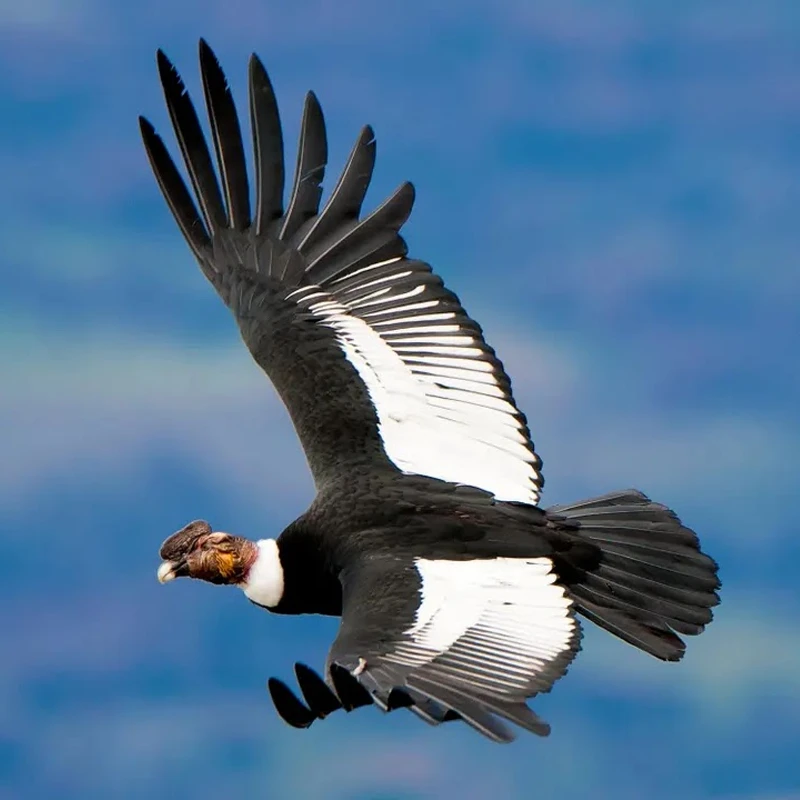The Andean condor, an iconic bird of Chile, soars through the skies as a symbol of freedom and strength. This incredible creature, featured on the national coat of arms, holds a special place in Andean culture and mythology, reminding us of our connection to nature.
With a wingspan of up to 3.2 meters (10.5 feet) and a length of up to 1.2 meters (4 feet), the condor is one of the largest flying birds in the world. Beyond its impressive size, it plays a crucial role in the ecosystem as a scavenger, recycling nutrients and maintaining the natural balance.

Male Andean Condor in flight. Source: www.aveschilenas.cl
The condor primarily feeds on carcasses, using its strong, sharp beak to tear through the hides of almost any animal. While it rarely hunts, it may occasionally prey on injured livestock, newborn animals, or small creatures.
Perfectly adapted to high altitudes, condors can live up to 5,000 meters (16,400 feet) above sea level. They use thermal currents to glide effortlessly through the air, traveling over 150 kilometers (93 miles) in a single day. When watching them in flight, you’ll notice their distinctive wing tips, where feathers spread out like open fingers.
Male condors are slightly larger than females and are easily recognized by the crest on their heads, a feature absent in females. These birds do not vocalize and only emit sounds audible at close range.

The condor’s reproductive cycle is slow: they lay one egg every two years, and chicks take about 10 months to leave the nest, reaching sexual maturity at around 6 years of age.
They prefer to sleep in rocky cliffs, often in groups, and do not build elaborate nests, simply laying their eggs on the ground. To spot their roosting areas, look for rocks stained white with condor droppings, a clear sign of their presence.
Chile is an excellent place to see condors in their natural habitat. Close to Santiago, the Cajón del Maipo and Farellones are two of the best spots to observe them.
The best time for sightings is during the winter months, from June to September, when condors descend from the high Andes in search of food. Early mornings or late afternoons are ideal for visits, as these are the times when condors use thermal currents to rise or return to their roosts. Spotting them is easy: their size, elegant gliding, and finger-like wing feathers are unmistakable.
When observing a condor, it’s important to be respectful. Keep your distance and avoid shouting, getting too close, or attempting to feed them. These measures not only protect the birds but also ensure a more authentic and responsible experience.
Despite their imposing presence, the Andean condor is classified as vulnerable. Their low reproductive rate, habitat loss, and threats such as poisoning or hunting have significantly reduced their populations. This decline is partly due to the mistaken belief that condors attack livestock.
Projects like Manku are working to secure the survival of this species, rehabilitating and reintroducing injured condors while educating the public about their importance to the ecosystem.

Protecting this species is not only about preserving a cultural symbol but also about safeguarding the ecosystems of the Andes. Watching a condor in flight is an experience that connects us to something greater. Every species has its role in the ecosystem, and caring for the condor means caring for our natural heritage. Next time you’re in the Andes, look up, watch its flight, and let this giant of the skies inspire you.






